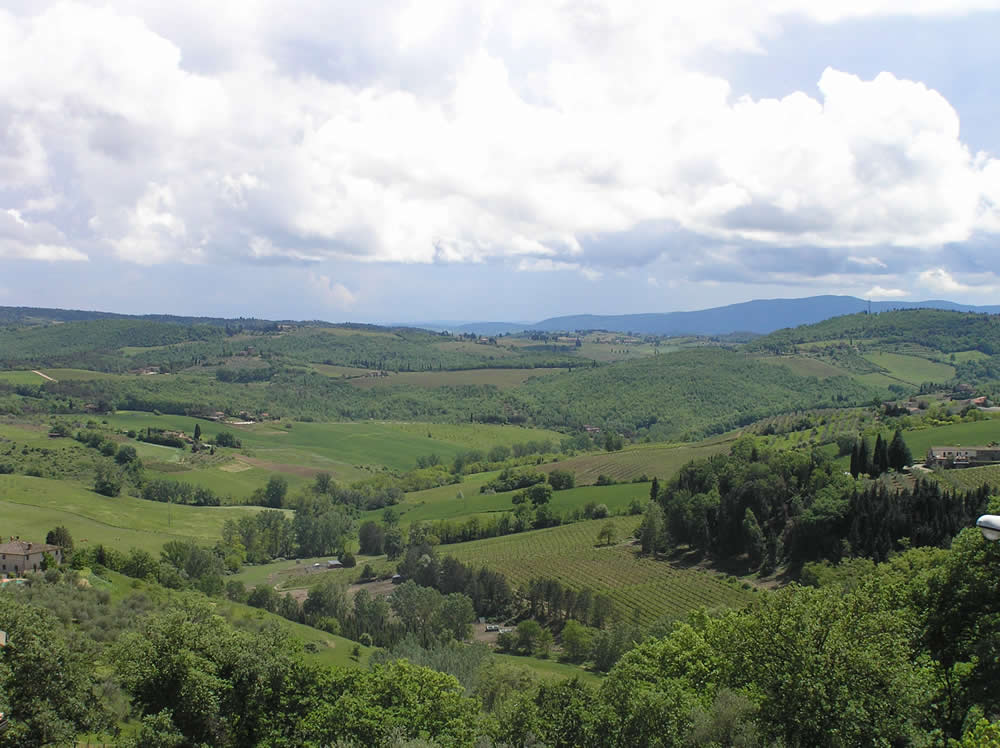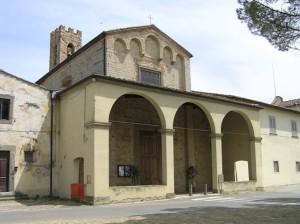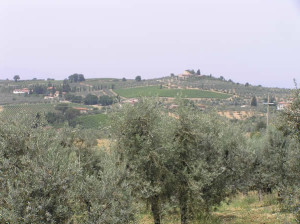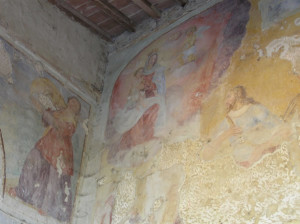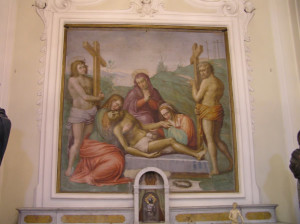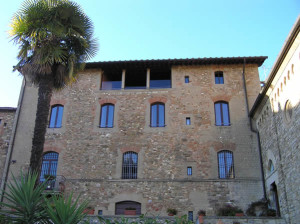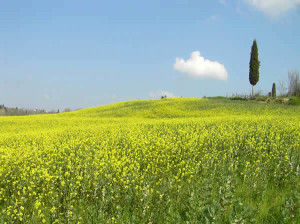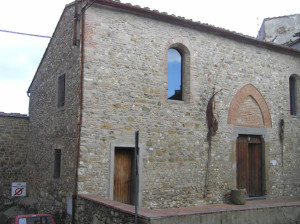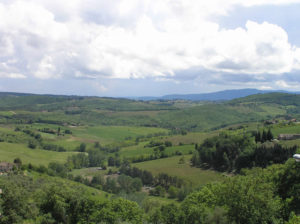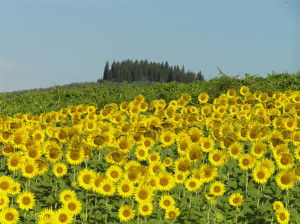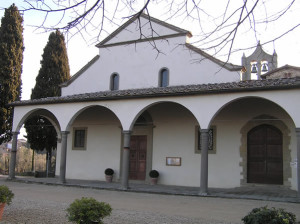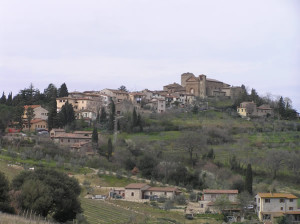Questo articolo è disponibile anche in:
![]() Français
Français ![]() Deutsch
Deutsch ![]() Español
Español ![]() Italiano
Italiano
Our itinerary in Florentine Chianti starts from the city of Florence. The starting point is the Firenze-Impruneta (ex Firenze-Certosa) exit of the Autostrada del Sole. The first stop is the town of San Casciano in Val di Pesa. Along the route we can make a detour of a few kilometers to visit the famous Albergaccio del Machiavelli. This is located in the town of Sant’Andrea in Percussina. Here lived Niccolò Machievalli, the author of “The Prince”.
SAN CASCIANO IN VAL DI PESA
San Casciano in Val di Pesa is a town located about ten kilometers from Florence. Here are some things to visit, including the parish church of Santa Cecilia a Decimo, one of the oldest churches in the area. The town of San Casciano preserves some parts of the walls and the keep. They are fortification works built by the Florentines in the second half of the fourteenth century. Among the most interesting churches in the town there are: the Collegiate Church – rebuilt in the 18th century -, the Misericordia church, and the church of Santa Maria del Gesù where there is the Museum of Sacred Art, which displays works from the surrounding churches.
In the surroundings of San Casciano near the castle of Bibbione and Bargino there is an important Etruscan tomb, the so-called “Tomba dell’Arciere” (“Archer’s Tomb”), which is dated around the seventh century BC. In the municipal area there are also the parish church of Santo Stefano a Campoli, which has been known since the tenth century, and the Castello di Gabbiano dating back to the fifteenth century and which has the particularity of having cylindrical towers on the sides.
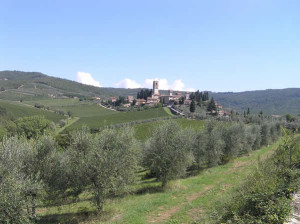
TAVARNELLE VAL DI PESA
Our itinerary in Florentine Chianti continues along the Via Cassia. Here there is first a large industrial area along the Pesa river and then the road begins to rise and enter the typical Chianti landscape.
Continue the road passing next to the castle of Poggio Petroio and the built-up area of Romita, until you reach the village of Tavarnelle Val di Pesa. Just outside the inhabited center is the Romanesque parish church of San Pietro in Bossolo where the local Museum of Sacred Art is located. During the Middle Ages the town was a stopping place for travelers. In fact, it owes its name to the taverns that welcomed travelers who moved between Florence and Siena along the way. Today’s the village is modern in appearance. But at the highest point of the inhabited center there is the ancient Franciscan church of Santa Lucia al Borghetto, a Gothic-style building built in the thirteenth century.
SAN DONATO IN POGGIO
Along the road from Tavarnelle Val di Pesa to San Donato in Poggio, in Morrocco, there is the Carmelite convent of Santa Maria del Carmine. Built in the 15th century, it is now home to a community of Australian nuns. Continuing for a few kilometers you reach the ancient medieval village of San Donato in Poggio, still partially surrounded by walls and on which two gates open.
The heart of the village is Piazza Malaspina, where the Renaissance Palazzo Malaspina, Palazzo Pretorio and the 15th century Church of Santa Maria della Neve overlook. A few hundred meters from the medieval nucleus of San Donato in Poggio is the Pieve di San Donato in Poggio, a beautiful 10th century Romanesque church with a terracotta baptismal font by Giovanni della Robbia. The nearby late Renaissance Sanctuary of Santa Maria delle Grazie in Pietracupa is also worth a stop.
BADIA A PASSIGNANO
Along the road between Tavarnelle and San Donato in Poggio, a detour to be done absolutely is the one that leads to the beautiful Badia a Passignano. This is an abbey of the Vallombrosan order dating back to the 11th century. Badia a Passignano has the appearance of a fortified village immersed in the typical Chianti landscape made of hills, vineyards and olive groves. Inside the abbey there is an ancient library with parchments and old books. Very beautiful is also the 13th century church of San Michele Arcangelo with frescoes from 1601 by Domenico Cresti known as il Passignano. While in the refectory of the monastery there is the fresco of the Last Supper by the XV century by Domenico and Davide Ghirlandaio.
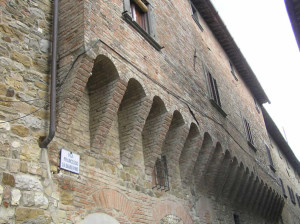
BARBERINO VAL D’ELSA
About 2 km from Tavarnelle Val di Pesa is the medieval village of Barberino Val d’Elsa. Still surrounded in part by the ancient walls on which two doors open, the most beautiful is the Porta Senese.
Barberino Val d’Elsa is a balcony on the Chianti, from the medieval village, in particular from the facade of the church of San Bartolomeo, you have a vast panorama over the whole of Chianti, with the small village of Tignano in front. But the view sweeps over much of Tuscany: on the Apennines, Pratomagno and Monte Amiata. Inside the medieval village there are some interesting buildings such as the Palazzo Pretorio with the facade full of coats of arms, the Palazzo del Cardinale and the Spedale dei Pellegrini. On the other side of the town in the gardens in front of the town hall and near the Porta Senese there is another beautiful panorama that ranges from San Gimignano to the Apuan Alps.
There are numerous places to visit near Barberino Val d’Elsa, among the most interesting the Romanesque church of S. Appiano with inside some frescoes and the remains of the four pillars of the ancient baptistery in front of the façade. Here is also an Antiquarium collects Etruscan, Roman and medieval finds. Also fascinating is the small and partly abandoned village of Linari.
THE ANCIENT SEMIFONTE
The nearby village of Petrognano, immersed in beautiful landscape, is the place where until 1202 stood the castle of Semifonte, an important imperial outpost destroyed by the Florentines in 1202. Nearby is the famous dome of San Donnino built at the end of the sixteenth century it reproduces in 1:8 scale the dome of Florence Cathedral. Among the curiosities of the territory of Barberino Val d’Elsa the fortified village of Tignano, the Castle of Paneretta, and in the church of Santa Maria in the village of Marcialla with a fresco attributed to a young Michelangelo Buonarroti. Under Marcialla are the ruins of the Castle of Pogni of which remains a part of a tower.
[divider]
[divider]
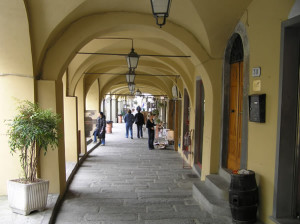
GREVE IN CHIANTI
Our itinerary in the Florentine Chianti continues towards Greve. Another interesting center of the Florentine Chianti is the town of Greve in Chianti, built as a market place in the center of an important agricultural area. At the center of the village is the triangular market square (Giovanni da Verrazzano square) surrounded by arcades and with the parish church of Santa Croce at one corner. Greve is the birthplace of the explorer Giovanni da Verrazzano, discoverer of the bay of New York. A statue of him is located in the market square dedicated to him. In the ex-convent of San Francesco there is the local Museum of Sacred Art.
MONTEFIORALLE AND PANZANO
Around Greve are to visit the castles of Uzzano, Verrazzano, Lamole, Vicchiomaggio and Vignamaggio, the latter being the birthplace of Lisa Gherardini, the famous Mona Lisa by Leonardo. Among the medieval villages not to miss a visit to the pretty villages of Montefioralle and Panzano. Montefioralle is located above the village of Greve and is still surrounded by medieval walls. Panzano in Chianti is located along the road that connects Greve in Chianti to Castellina in Chianti, the Chiantigiana. There are the remains of the castle and a small medieval village, just outside the town of Panzano is the Church of San Leolino, a Romanesque parish church of the tenth century.
From Panzano we can go towards Castellina in Chianti and Radda in Chianti and continue the itinerary in the Sienese Chianti.
Questo articolo è disponibile anche in:
![]() Français
Français ![]() Deutsch
Deutsch ![]() Español
Español ![]() Italiano
Italiano

